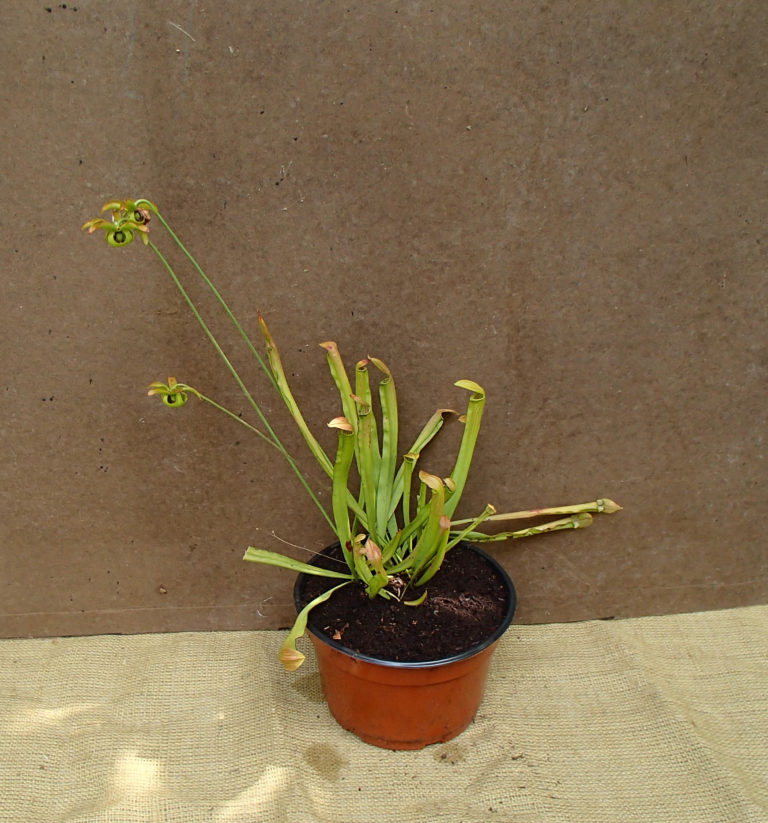Although the Sweet Pitcherplant has a fragrant, maroon-colored flower at the top of a leafless stem, usually taller than the pitchers (about 10 inches), it is not the flower that fascinates people. The hollow pitchers of this insectivorous perennial plant are leaves modified to passively capture small animal creatures. Insects attracted to the colorful leaves cannot crawl out of the pitcher because of downward pointing hairs within, and they eventually fall into the water and are digested by plant enzymes. Nutrients, especially nitrogen and phosphorus, are absorbed. These plants are water-lovers and if not grown in a pond can easily be grown in distilled or deionized water in full sun in a container (no fertilizer!). Sweet Pitcherplant has a tendency to lay its leaves along the ground, even in full sun.
NURSERY HOURS
Wednesday: 10-4 Thursday: 10-6 Friday-Saturday: 10-4 Sunday: 12-4
Sarracenia rubra

Key Info
Scientific Name: Sarracenia rubra Walter
Common Names: Sweet Pitcherplant
Family Names: Sarraceniaceae
Light Requirement: Full sun
Flower Color: Maroon outer, greenish inner
Additional Info
Habit: Sarracenias are clump-forming herbaceous perennials that grow as rosettes from a branching rhizome, forming colonies and containing fibrous roots 8-12 inches long along its length. The pitchers are modified leaves that (in addition to their function of photosynthesis) attract and entrap their insect prey by means of colorful presentation and nectar production (like flowers) and modifications to prevent escape. Wikipedia has a concise treatment of Sarracenia's entrapment mechanisms.
Height: 2'-3'
Spread: 1'-2'
Soil Conditions: wet
Leaves: S. rubra's pitchers are upright, slender, about 20 inches tall, with a pointed, semi-erect hood not reflexed, and a more or less open orifice.
Flowers (or reproductive structures: Petals are red/maroon on the outside and greenish within, descending from the inverted, umbrella like flower.
Fruit: Each flower is followed by a dry 5-parted seed capsule that splits open along 5 seams at maturity (June/July) exposing small, papery, pear-shaped seeds. The seeds fall near the parent plant.
Natural Distribution: Infrequent in shrub bogs and savannas in coastal plain; rare along streams in mountains.
USDA Hardiness Zone: 4 to 8
Pollination: Bees, and other insects.
Wildlife Connections: Obtains nutrients (nitrate and phosphate) from insects. Insects and other tiny creatures are attracted by the nectar and coloration of the traps. The main prey of Sarracenias are ants, flies, wasps, bees, beetles, slugs and snails.
Propagation: Sarracenias can be propagated from seed or, more frequently, by division.
